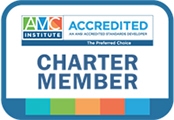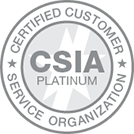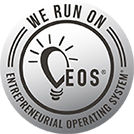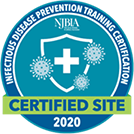Engaging volunteers from all career levels brings fresh perspective to associations
With so many conversations focusing on diversity and inclusion in the workplace, another aspect of inclusion programs has surfaced: the need for equity. For associations working to implement diversity and inclusion initiatives, how does equity shape their plans?
Defining Equity
Essential to understand just what equity is, is understanding what it is not. At first glance, equity and equality can be easily mistaken as the same concept, but that is far from true.
The D5 Coalition defines equity as “promoting justice, impartiality, and fairness within the procedures, processes, and distribution of resources by institutions or systems.”
Merriam-Webster defines equality as “the quality or state of being equal.”
For example: providing all students with a laptop to complete schoolwork at home is equality. Providing all students with a laptop and ensuring that students who don’t have high-speed internet access are given a way to connect is equity.
Equality is only part of the conversation. Adopting a culture and policies that promote diversity, equity, and inclusion (DEI) lay the groundwork for achieving the goal of being an organization that values fairness and the contribution and participation of all people.
Equity in Associations
While ensuring equity across an organization can be a daunting task, one place associations can make an immediate impact is creating opportunities to engage professionals at different career and experience levels in its leadership. This may seem like an obvious concept, but consider the following reported by Leading With Intent:
- Just 2% of nonprofit board members are under 30 years old
- 71% of nonprofit board members are over 50 years old
- Nearly 20% of association chief executives report they are not prioritizing demographics in their board recruitment strategy
Most associations already have a diverse membership representing a range of ages and professional experiences, creating a rich — and easy — opportunity to start changing these statistics.
Leveraging Student Value
AH client partner the Private Practice Section (PPS) of the American Physical Therapy Association (APTA) engaged student volunteers on the active editorial board of the association’s highly regarded member magazine, Impact. The student position was borne out of an effort to get more people involved with the monthly magazine.
“It opened up volunteering opportunities to get people involved who maybe wouldn't have been involved before and to show that we care about everyone’s input,” said Editor Stacy M. Menz, PT, DPT, PCS.
In addition to engaging the student population, the student position makes it possible to bring in new volunteers regularly who have unique and differing perspectives, to the benefit of PPS and Impact.
“That particular position is constantly keeping new blood coming in, and new blood means new ideas,” Menz said. “Those volunteers have fresh thoughts and ways of looking at things, and sometimes they’ve learned something in school that the magazine, and our readers, will benefit from.”
The benefits go both ways: student volunteers build their network, forge connections with more experienced members, and build their resume with contributions to the magazine — rich opportunities that wouldn’t be available without the dedicated effort of PPS to create a position for student members.
Early Career and Next Generation Board Members
From students to early career members, younger demographics can help shape the future of an association. The Insurance Society of Philadelphia (ISOP) had engaged early career and next generation members in committees but hadn’t taken the bold step of creating a board position. The organization — which has been around for 120 years — was seeing increasing numbers of its members and volunteers retire out of the industry and recognized that it needed to make a concerted effort to appeal to younger members.
“ISOP’s next-generation and early-career members were extremely involved in committees or as co-chairs, and I pressed assiduously to integrate these volunteers into the board so they would have a voice where governance happens,” said ISOP Executive Director Gabrielle Copperwheat.
ISOP leadership and Copperwheat worked diligently for a year to create the early career board position, which includes voting rights in addition to a five-person Next Generation Advisory Council.
“The early career board position and advisory council shows that ISOP is trying to bring as many people to the table as possible that is reflective not just of their clients but of the new generation of professionals coming into the industry,” Copperwheat said.
In addition to a board leadership position, ISOP also invested resources in an internship series for up-and-coming professionals. Despite the in-person meeting being canceled, ISOP went forward with the series virtually, which provided education and connectivity with the region’s most senior leaders for the interns who couldn’t physically report to any assignments. One of the interns even secured a position at one of the largest insurance groups due to the relationships created in the internship series—a byproduct of ISOP’s investment in and recognition of the value of early career professionals.
“That's the kind of forward thrust that we're seeing,” said Copperwheat. “And because these younger members are on the board now, the larger board hears about these successes and sees the value. The Next Gen is being heard.”
Where to Start
Many associations have already started to tackle DEI by creating an association diversity and inclusion program. These programs may include a diversity and inclusion task force, work group, or committee dedicated to implementing policies and nurturing a culture that embraces fairness and creates opportunity for underrepresented populations.
These task forces or committees can make equity part of the conversation, incorporating opportunities for members of all backgrounds and experience levels into their programs and policies.
Copperwheat’s advice for associations striving to incorporate equity into their organization: Find the right people to prop up and give them visibility.
“The next generation is really your association's future, so don't give up on creating that opportunity. Keep at it,” Copperwheat said. “Engage the ones whom you want to elevate to the board. Make sure they're aligned with your mission and give them the right visibility to help them rise to that level.”
As membership organizations, associations represent a diverse population of professionals at all career stages and from a wide range of backgrounds. Incorporate equity into your DEI initiative by engaging volunteers from different career levels. Not only do younger and early-career members bring fresh perspectives to the association, they help change the face of association leadership and help associations more fully represent their memberships.
Read more about creating an association diversity and inclusion program.




